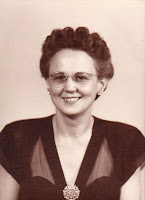Thinking about writing a
family history story? I took the plunge, and am here to tell you the water’s
fine.
In February, encouraged by Harold Henderson's article, "Why We Don't Write, and How We Can" and Lynn Palermo's Family History Writing Challenge, I
wrote two blog posts and one full-length article about my ancestors. All told,
that came to about 4600 words, plus at least half that much again in endnotes. Yes,
it took a lot of time, but I’m glad I did it. The act of writing the article,
especially, drove home a few points that I thought I’d share with you.
Five thoughts on the value
and process of writing family history:
1. Getting started is (almost) half
the battle
Although I knew I wanted to
write an article in February, I hadn’t settled on what it was going to be
about. It took me several days to determine a subject, narrow the focus and
scope, develop an approach, and write the introduction. I tossed out two
outlines, tried mind-mapping, and cut the beginnings of several drafts in the
process. Finally I came up with a rough framework—just a list of subheadings
and points, really—that worked. The lesson, for me at least, is
not to get discouraged early. It takes a certain amount of perseverance just to
get through the starting gate.
2. Writing exposes any holes in
your research
Even when you’ve already done
the research, analyzed and correlated it, and formed your conclusions, chances
are you’re going to find some gaps when you sit down to write it up in
narrative form. Writing forces you to see those holes and find ways to fill
them. In this case, I realized I hadn’t fully explored all the siblings of my
ancestors (one guy alone had ten of them). And there was one instance where I
felt I needed additional proof of the relationship between generations. There’s
nothing like the thought that your work might be put into print to make you
double-check your findings for flaws. In the end, I visited a courthouse, three
libraries in different counties, a cemetery, and the state archives after I started writing the article.
Just to fill those gaps and make sure I had it right. The lesson? Be prepared
to do more research while you’re writing, to strengthen and solidify your work.
3. Creating broader appeal means
thinking about your reader
Why should total strangers
want to read about your family history? I can think of two main reasons: (1)
they’re interested in the methods and resources you used to solve your
genealogical questions, and (2) they’re absorbed by the way you tell your story.
Ideally, you want to satisfy readers on both these accounts. Since I wanted to
write an article that appealed to a wide audience, I tried to incorporate bits
of history, geography, and social history into my account. And I tried to
illustrate how I pulled information from multiple sources together to frame my
ancestors’ lives. I took care with the endnotes, to help people who might be
interested in using the same or similar sources. Of course, I’m not sure how
well I accomplished those goals, since the article hasn’t yet been accepted for
publication. Still, I think the take-away is a valid one: give your reader a
reason to keep reading.
4. Editing is just as important
as writing
Well, this point probably
doesn’t come as a surprise to anyone. A lot of my paragraphs—including the
first one—looked very different in the end than they did at the beginning. Some
writers save all the editing and rewriting until last, and that’s fine. But I
did part of it as I went along, spending some time each day cleaning up what I had previously written, followed by more extensive revisions after it was mostly finished. Before I sent in my final draft, I printed it
out and read it out loud, slowly, to myself. Believe me, you can catch a lot of
errors that way, and you can also see where things sound awkward or unclear.
The unavoidable bottom line is that editing takes time and thought.
5. Focusing on the goal will see you through
Writing, for me, demands
total focus. Some people might be able to multi-task while writing, but I’m not
one of them. While I was working on the article, I fell asleep thinking about
the family. When I woke up, they were in my head again within moments. That
kind of intensity means that not a whole lot else gets done, to be honest. But
it feels good to have created something that hopefully will be published,
preserving the work that I’ve done on the family. And that, above all, was my
goal: to move the research out of my files and synthesize it into a format that
could be accessed, used, and hopefully enjoyed by others. There’s a feeling of
satisfaction from knowing it will be preserved, come what may. The end result
is worth the time it takes.
If you’ve considered writing
a family history article or submitting a story for publication, I’d love to
know if you found these thoughts helpful. I’d also welcome any other tips or
insights you might have. What inspires you to write, and what are the take-away lessons of writing for you?
--Shelley








